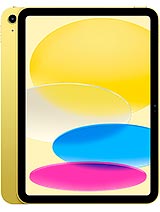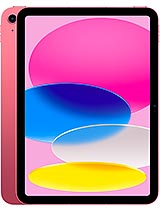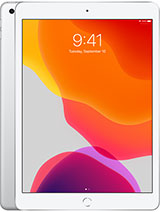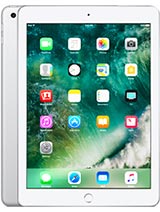iPad Parts - Tablets Repair Parts
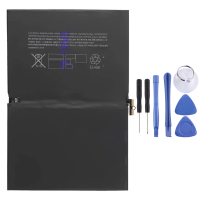
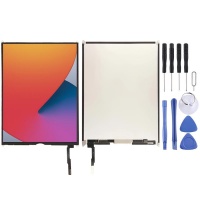
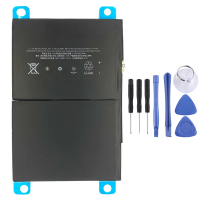
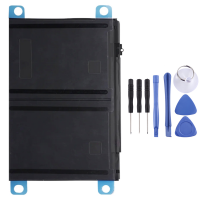
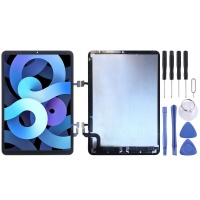
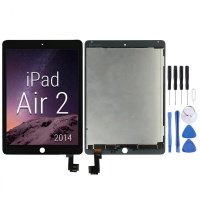
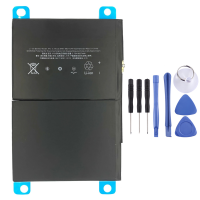


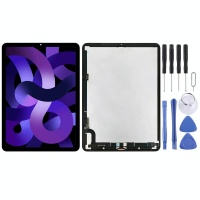
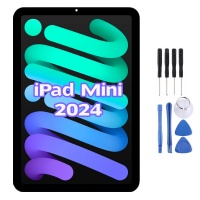









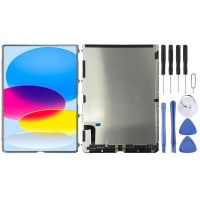
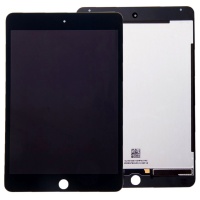
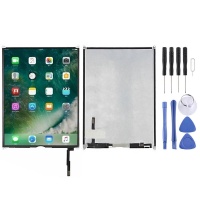
- Your Definitive Guide to iPad Spare Parts at iLevante.com
- The Most Common iPad Problems: What Usually Goes Wrong?
- Cracked or Damaged Screen: The Classic Accident
- Drained or Faulty Battery: When Autonomy Says Goodbye
- 🔌 Problems with the Charging Port (Lightning or USB-C): It Won't Charge!
- 🔊 Audio Problems: Speakers and Microphones
- Unresponsive Buttons (Home, Volume, Power)
- Other Less Common Hardware Problems
- Types of iPad Spare Parts: Screens and Batteries in Detail
- Screens: A World of Technologies (LCD, OLED, INCELL...)
- Batteries: Originals vs. OEM and the Importance of Quality
- Other Common Spare Parts
- Hardware or Software Problem? A Technical Perspective
- Do You Dare to Repair It? Basic Guide and Tools
- Essential Tools to Open Your iPad
- General Steps for Common Repairs (Screen/Battery)
- Important Precautions: Safety First!
- Give Your iPad a New Lease of Life with iLevante.com
Your Definitive Guide to iPad Spare Parts at iLevante.com
Hello! If you're here, it's likely your faithful iPad is going through a rough patch. Perhaps the screen has cracked 💔, the battery doesn't last as long as it used to 🔋, or some other component has decided to take a permanent holiday. Don't worry! At iLevante.com, we not only offer you the spare parts you need, but we also want to give you all the information so you understand what's happening to your Apple tablet and how you can fix it.
iPads are fantastic, versatile, and powerful devices, but like any piece of technology, they aren't immune to the passage of time and accidents. From the student who uses it to take notes to the professional who uses it for design, including those who enjoy series and games, a functional iPad is almost indispensable. That's why, when something goes wrong, finding the right spare part and knowing how to tackle the repair is key. Let's get to it!
Attention! Before you start: Repairing an iPad can be complicated and requires a certain technical skill, patience, and the right tools. If you attempt a repair yourself, you do so at your own risk. Incorrectly handling components, especially the battery, can be dangerous and cause major damage to your device or even injury. If you don't feel confident, it's always better to go to a qualified professional. That said, let's explore the world of iPad spare parts!
The Most Common iPad Problems: What Usually Goes Wrong?
Although iPads are known for their quality, certain hardware problems are more frequent than others. Knowing them will help you diagnose what might be failing on your device.
Cracked or Damaged Screen: The Classic Accident
It is, without a doubt, one of the most common problems. An unfortunate drop, a knock on the edge, or even excessive pressure can cause the glass to crack or the screen to stop working correctly. The symptoms are clear: visible cracks, problems with touch response (the famous "digitiser" or "touchscreen" not responding), strange lines, blemishes on the image, or, in the worst cases, a completely black screen. Sometimes, the damage isn't just cosmetic; a broken screen can affect interaction with the device and even, if not repaired, could allow dust or moisture ingress that damages other internal components.
Drained or Faulty Battery: When Autonomy Says Goodbye
Over time and with charge cycles, all lithium-ion batteries degrade chemically. It's a natural and unavoidable process. On an iPad, this translates into shorter battery life, needing to charge it more often, unexpected rapid discharges, or even sudden shutdowns even though the indicator shows remaining charge. In more advanced cases of degradation, the iPad's overall performance can be affected, as the system tries to manage the power of a weakened battery. A clear symptom of serious battery problems is unexpected restarts.
🔌 Problems with the Charging Port (Lightning or USB-C): It Won't Charge!
The port where you connect the cable to charge your iPad can also cause problems. It might be due to accumulated dirt (dust, lint), physical damage from forcing the connector, or even corrosion if moisture has entered. Symptoms include the iPad not charging at all, intermittent charging, having to wiggle the cable for it to connect, or the computer not recognising the device. Sometimes, iOS may display a message indicating that liquid has been detected in the connector.
🔊 Audio Problems: Speakers and Microphones
If your iPad's sound is distorted, very low, or there's no sound at all from the speakers, it could be due to several causes. Dirt accumulation in the speaker grilles is common. There might also be an internal hardware failure or even a software problem. Similarly, if people can't hear you well on FaceTime calls, or if voice or video recordings don't capture audio, the problem could be with one of the iPad's microphones. Dirt or physical damage are often the culprits, although it can also be a software permissions issue for certain apps.
Unresponsive Buttons (Home, Volume, Power)
With continued use, physical buttons can wear out or stop working correctly. The Home button (on older models), volume buttons, or the power/top button can get stuck, stop "clicking", or simply not register a press. Sometimes, the cause is accumulated dirt, but it can also be a failure of the internal mechanism or the flex cable that connects it to the logic board.
Other Less Common Hardware Problems
Although less frequent, other faults can arise: problems with the camera (blurry photos, blemishes, flash not working), Wi-Fi or Bluetooth connection failures that aren't resolved with restarts or updates, or even more serious problems with the logic board, which can manifest in various ways, such as the iPad not turning on or having erratic faults.
Types of iPad Spare Parts: Screens and Batteries in Detail
When it's time to repair, choosing the right spare part is essential. At iLevante.com, we offer different options, especially for screens and batteries, so you can find the one that best suits your needs and budget.
Screens: A World of Technologies (LCD, OLED, INCELL...)
The screen is one of the most expensive and complex components of the iPad. Depending on your iPad model and what you're looking for, there are different types of replacement screens:
- Original Apple Screens: These are screens manufactured by Apple or its direct suppliers, exactly the same as the one your iPad came with from the factory. They offer the highest image quality, brightness, accurate colours, touch response, and durability. They are usually the most expensive option but guarantee perfect compatibility and performance. Apple uses different technologies depending on the model:
- Liquid Retina (IPS LCD): Present in most iPad, iPad Air, and iPad mini models, and older iPad Pros. These are LCD screens with IPS (In-Plane Switching) technology offering good viewing angles and accurate colours.
- Liquid Retina XDR (Mini-LED): Used in some iPad Pro models (like the 12.9-inch 5th and 6th gen), it's an advanced LCD technology with Mini-LED backlighting that allows for much higher brightness and contrast, approaching OLED quality.
- Ultra Retina XDR (Tandem OLED): The latest technology introduced in the 2024 iPad Pro (M4) models. It uses a "tandem" OLED structure (two OLED layers) to achieve spectacular brightness (up to 1600 nits in HDR), perfect blacks, vibrant colours, and greater durability.
- OLED/AMOLED Screens (Aftermarket): For iPad models that originally use LCD, aftermarket OLED replacements are sometimes available. OLED (Organic Light Emitting Diode) and AMOLED (Active Matrix OLED) are technologies where each pixel emits its own light, resulting in perfect blacks (pixels turned off), infinite contrast, and very vivid colours. They tend to be thinner and consume less power when displaying blacks. However, they can be more expensive than LCDs and, theoretically, more susceptible to "burn-in" (permanent marks from static images) over time, although this is less problematic in modern devices. The iPad Pro (M4) models are the first to use OLED from the factory.
- INCELL Screens: This is an LCD technology where the touch layer is integrated ("in-cell") directly into the LCD pixel layer, instead of being a separate layer. This makes them thinner and lighter than traditional LCDs (sometimes called ONCELL or OUTCELL where the touch layer is on top or underneath). They offer good image quality and touch response, often superior to basic TFTs, and are usually a more economical replacement option than OLEDs or originals. They may have slightly less vibrant colours or slightly more limited viewing angles than OLEDs or high-end IPS screens, but they represent a good balance of quality and price.
- TFT Screens: TFT (Thin-Film Transistor) is a basic type of LCD technology. They are usually the most economical option. They use transistors to control each pixel and require constant backlighting. Their image quality, especially in terms of viewing angles, contrast, and colour vibrancy, is usually inferior to IPS, INCELL, or OLED screens. Blacks tend to be more greyish because the backlight cannot be completely turned off. Although functional, the difference in visual quality compared to an original iPad screen is usually noticeable.
At iLevante.com, we clearly specify the quality and type of each screen (e.g., Original Quality, FOG OEM, INCELL) so you can choose knowingly. Pay close attention to the specifications of each product!
Batteries: Originals vs. OEM and the Importance of Quality
The battery is the energy heart of your iPad. When you need to replace it, you'll mainly find these options:
- Original Apple Batteries: These are batteries manufactured and certified by Apple. They guarantee maximum compatibility, performance, and safety, as they are specifically designed to work with the iPad's hardware and software (iOS/iPadOS), including correct communication of battery health status. They are the option recommended by Apple but are usually obtained through their authorised repair services.
- OEM (Original Equipment Manufacturer) Batteries: This term can cause confusion. Technically, an OEM battery is manufactured by the same company that produces batteries for Apple, following similar or identical specifications, but sold under another brand or unbranded. In the spare parts market practice, "OEM" is often used to refer to high-quality batteries that are not directly from Apple but offer performance very close to the original. They may come without the Apple logo for legal or branding reasons. Although iOS might display a message indicating it cannot verify if the battery is genuine (on newer models), this usually doesn't affect performance or charging capacity. They are an excellent and more economical alternative to originals, provided they are purchased from a reliable supplier like iLevante.com, which guarantees their quality.
- Generic Compatible Batteries: These are batteries manufactured by third parties with no direct relationship with Apple or its OEM suppliers. Their quality can vary enormously. Some may work well, but others may have lower actual capacity, a shorter lifespan, or even fail to meet safety standards. Be wary of excessively low prices.
Why does the battery degrade? Li-ion batteries age due to several factors:
- Charge Cycles: Every time you discharge and charge the battery, you complete cycles. They are designed for a limited number of cycles (Apple mentions around 1000 cycles to maintain 80% capacity in recent iPads) before capacity noticeably decreases.
- Temperature: Extreme heat (leaving the iPad in the sun, charging it with cases that don't dissipate heat well) accelerates chemical degradation. Extreme cold can also temporarily affect performance.
- Extreme Charge Levels: Constantly keeping the battery at 100% or letting it discharge completely often can also stress it. That's why iOS includes features like Optimised Battery Charging or the 80% limit on new models.
- General Chemical Age: Simply, over time, internal components degrade.
At iLevante.com, we offer high-quality batteries, including OEM options, to ensure your iPad regains its autonomy. You can find specific models like the battery for iPad Pro 10.5 (8134mAh) and other references. Check our catalogue!
Other Common Spare Parts
Besides screens and batteries, at iLevante.com you can find other essential spare parts:
- Charging Connectors: The dock or charging port (Lightning or USB-C) that sometimes fails.
- Cameras: Front or rear camera modules if they stop working or provide poor image quality.
- Speakers and Microphones: To solve audio problems.
- Flex Cables: Small flat cables that connect different components (buttons, screen, battery) to the logic board. A damaged flex cable can cause seemingly inexplicable faults.
- Buttons: The physical mechanisms for power, volume, or Home.
- Adhesives: Pre-cut adhesive strips specific to each model, necessary to reseal the screen after a repair.
Hardware or Software Problem? A Technical Perspective
Sometimes, an iPad that is slow, freezes, restarts, or has connection problems might make you think you need a spare part, but beware! It's not always a hardware failure. From a technician's perspective, it's crucial to differentiate.
Symptoms that MAY be software-related (but seem like hardware):
- Extreme Slowness or Freezes: If the iPad becomes very slow or often gets "stuck," it could be a lack of storage space, too many apps open in the background, or a problem with an iPadOS version. Before thinking about the logic board, check storage and close apps.
- Unexpected Restarts: Although they can be a symptom of battery issues, they can also occur due to software conflicts, malicious apps, or operating system failures. An iPadOS restore sometimes solves it.
- Post-Update Battery Problems: It's common for battery life to be shorter right after an iPadOS update, as the system performs background tasks. Give it a couple of days and charge cycles to stabilise.
- Connectivity Failures (Wi-Fi/Bluetooth): Before blaming the antenna, make sure Aeroplane Mode isn't active, restart your router and iPad, forget the Wi-Fi network and reconnect, or reset network settings. Sometimes, an iPadOS update fixes these bugs.
- Apps Closing by Themselves: This is usually an app problem (it needs updating) or lack of RAM, not necessarily a hardware failure.
How to try and diagnose (user/basic technician level):
- Restart the iPad: The universal first step. A forced restart (check how to do it for your specific model) can solve temporary faults.
- Update iPadOS: Make sure you have the latest version. Apple fixes many bugs with updates.
- Free Up Space: Go to Settings > General > iPad Storage and delete what you don't need if you're close to the limit.
- Check Battery Health: In Settings > Battery > Battery Health (if your model shows it), check the maximum capacity. If it's very low (near or below 80%), performance problems might be due to that.
- Reset Settings: In Settings > General > Transfer or Reset iPad > Reset, you can try "Reset All Settings" (doesn't erase data) or "Reset Network Settings."
- Apple Diagnostics (Limited on iPad): Unlike Macs, iPads don't have such an accessible hardware diagnostic tool for the user. You can enable sending diagnostic data to Apple in Settings > Privacy & Security > Analytics & Improvements, but this doesn't give you a direct result. iTunes/Finder on a computer sometimes shows error codes during failed restores that can indicate hardware problems.
- Recovery/DFU Mode: As a last software resort, you can try restoring the iPad via a computer using Recovery Mode or DFU Mode. If the restore fails repeatedly with specific errors, it might point to a hardware problem (memory, logic board).
If, after trying software solutions, the problem persists (cracked screen, won't charge with any cable, dead physical buttons, etc.), then it's very likely you need a hardware replacement.
Do You Dare to Repair It? Basic Guide and Tools
If you've decided that DIY (Do It Yourself) repair is for you, great! But remember the initial warning: proceed with care. Here's a general idea of the process and the tools you'll need.
Essential Tools to Open Your iPad
You can't repair an iPad with just any screwdriver. You'll need specific precision tools:
- Opening Kit:
- Heat Source: Heat gun (carefully) or an iOpener-type thermal pouch to soften the screen adhesive.
- Suction Cup: To lift the screen once the adhesive is soft.
- Plastic Opening Picks: Thin and sturdy, to cut the adhesive around the edge without scratching the frame.
- Plastic Spudgers: To disconnect flex cables and gently pry connectors and components. Avoid using metal near the logic board!
- Thin Pry Tools: Similar to picks, but sometimes with different shapes to separate clips or the casing.
- Precision Screwdrivers: You'll generally need Phillips #000, #00, and possibly Pentalobe or Tri-point depending on the model and internal screws. A good set with magnetic tips is very useful.
- Tweezers: Fine-tipped and preferably anti-static for handling tiny screws and delicate connectors.
- Anti-Static Equipment: Anti-static wrist strap and/or mat. Essential to avoid frying components with your body's static electricity!
- Other Useful Items: Isopropyl alcohol (90% or higher) to clean adhesive residue, lint-free cloths, safety goggles (especially if the screen is cracked), gloves, and a magnetic mat or containers to organise screws (they are different sizes!).
Many spare parts at iLevante.com, such as some screens or battery kits, already include a basic tool kit; check the product description!
General Steps for Common Repairs (Screen/Battery)
Important: This is a very general guide. Each iPad model is different. Look for specific guides for your exact model (e.g., on iFixit) before you start.
- Preparation: Back up your data! Work in a clean, well-lit, and distraction-free area. Discharge the battery below 25% for safety (reduces risk if accidentally punctured). Have all tools and the spare part老化to hand. Organise screws meticulously (take photos or use a template!).
- Opening (The tricky part!): Apply moderate, even heat around the edges of the screen to soften the adhesive. Use the suction cup to create a small gap and insert a plastic pick. Carefully slide the pick around the entire perimeter to cut the adhesive. Go slowly! Be careful with the flex cables connecting the screen to the board; they are usually on one of the sides. Don't lift the screen abruptly.
- Disconnection (Priority: Battery!): Once open, locate the battery connector on the logic board. It's usually covered by a small, screwed-on metal bracket. Remove the bracket screws and, using a plastic spudger, disconnect the battery connector BEFORE any other cable. This cuts off power and prevents short circuits. Then, disconnect the screen, digitiser, and Home button cables (if applicable), always using plastic tools and lifting connector tabs if present, without forcing.
- Component Replacement:
- Screen: Remove any screws holding the old screen. Temporarily connect the new screen (without sealing it) and connect the battery. Turn on the iPad and test that the image looks good and the touch works across the entire surface. If all OK, disconnect the battery and screen again.
- Battery: The old battery is usually stuck with strong adhesive strips. It may require applying a little isopropyl alcohol around the edges (careful not to wet other components) or using moderate heat on the back to soften the adhesive. Pry with a flat plastic tool (never metal or sharp objects!) very carefully to avoid bending or puncturing the battery. Once out, place the new battery in position (they sometimes come with new adhesive).
- Reassembly: Reconnect all flex cables in reverse order (battery always last!). Ensure they click in properly. Thoroughly clean the iPad frame of old adhesive residue. Apply the new pre-cut adhesive strips to the frame. Carefully position the screen, aligning it correctly, and press firmly around the edges for the adhesive to bond. Replace any metal brackets and internal screws you removed.
- Final Test: Turn on the iPad. Test all functions: touch, brightness, colours, buttons, cameras (front and rear), Wi-Fi, Bluetooth, speakers, microphone, charging... Everything!
Important Precautions: Safety First!
We repeat, because it's crucial:
- Lithium Batteries: They are delicate and potentially dangerous. DO NOT puncture, bend, or crush them. If it smells strange, swells, or smokes, get away and seek professional help!
- Electrostatic Discharge (ESD): Always use an anti-static wrist strap connected to earth. An invisible spark can permanently damage the logic board or other chips. Work on a non-conductive surface.
- Flex Cables: They are extremely fragile. Don't pull on them, don't fold them at sharp angles, and don't force the connectors. Use plastic tools to disconnect them.
- Heat: Apply only the necessary heat to soften the adhesive. Too much heat can damage the screen (LCD/OLED), battery, or other components.
- Screws: Organise them! They are different sizes and lengths. Putting a long screw where a short one goes can pierce the logic board or other components. Use a magnetic mat or labelled containers.
- Broken Glass: If the screen is cracked, wear safety goggles and gloves to avoid cuts. Clean up small fragments thoroughly.
- Liquids: Keep all liquids (drinks, cleaning products) away from the work area.
Give Your iPad a New Lease of Life with iLevante.com
As you've seen, even if your iPad has a problem, all is not lost! Many of the most common faults, like a cracked screen or a worn-out battery, can be fixed with the right spare parts. Understanding which type of screen best suits your needs (from an economical TFT or INCELL to a top-quality OLED or an Original) and knowing what to expect from a quality OEM battery empowers you to make the best decision for your wallet and your device.
Repairing it yourself is a viable and rewarding option that can save you money, but it demands patience, the right tools, and, above all, a lot of caution.
We offer you a wide range of spare parts for all iPad models, from screens and batteries of proven quality to charging connectors, cameras, speakers, and the necessary tools for repair. We ensure our components, including OEM options, meet high standards so your iPad works as you expect it to again.
Ready to revive your iPad? Explore our catalogue now, search for your specific model, and find the part you need. Give your Apple tablet a second chance with the confidence and quality that iLevante.com offers! 🚀

